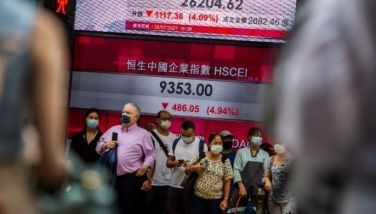Lessons from Iceland’s white gold

REYKJAVIK – There’s no lack of stories here in Iceland – from the funny to the bewildering to the enigmatic. You’ll hear, for instance, of endless tales about elves and their tiny homes; the Vikings and their adventures, and wishes made true by ladies of the light.
But Iceland’s success story is even more interesting than any fable or urban legend that’s been told and retold here, at least for a Filipino like me, dreaming, in this Land of Fire and Ice, of the same success for my country.
Iceland, population 366,455, is a highly developed country with its citizens enjoying a remarkable quality of life, thanks in part to its so-called white gold or Iceland’s geothermal water.
I learned about this on my first night here when I sat down with Kamma Thordarson, project manager at Green by Iceland, a public-private organization that describes itself as “a platform for cooperation on climate issues and green solutions.” Its role is promoting the export of Icelandic green solutions and renewable energy expertise while supporting Iceland‘s reputation as a leader in sustainability.
Green energy
Indeed, Iceland, I learned from Kamma, is a success story in renewable energy, particularly geothermal, and here’s why.
More than 50 years ago, Kamma narrated, Iceland depended on coal, and as past photos would show, dark clouds of coal dust loomed over the city.
But Iceland made the bold move of shifting to renewable energy in response to the 1973 oil crisis that resulted in global crude oil prices increasing 70 percent.
At the time, approximately half of all houses in the island nation were heated with imported fossil fuel, which came at a great expense to the country.
However, with enough political will, Iceland successfully transformed into a clean energy economy within just two decades, Kamma said.
“The turning point was in the ‘70s during the oil crisis. The government decided to switch to geothermal in order to be energy independent. It was a natural security measure,” she said.
According to a separate article on the Atlantic Council published in 2018, subsequent generations of Icelanders have reaped the benefits of the foresight and courage of the politicians and policymakers from that time.
Quality of life
Today, Kamma said, Iceland prides itself in sourcing nearly 100 percent of its power requirements from renewable energy.
Nine out of 10 houses in Iceland are heated directly with geothermal heat, while the remaining 10 percent, which are in areas where geothermal resources are yet to be found, use renewable electricity.
Kamma believes the shift to renewable energy decades ago is one of the reasons that made the quality of life for Icelanders significantly better.
“The quality of life in Iceland is extraordinary and renewable energy has played a role in it,” Kamma said.
How is this? I asked.
For one, she said, the air in Iceland is so much cleaner than it could otherwise be.
“Skies have been clear for 50 years now,” Kamma said, visibly proud of her country’s achievement with regard to clean energy.
On a more practical level, she said, it’s also no longer expensive for Icelanders to heat their homes because they have access to competitively priced energy.
The Atlantic Council article also said that the social and economic benefits of this development have been substantial.
“As calculated by experts in the Icelandic ministry of industries and innovation, the annual macro-economic benefits of the geothermal district heating system accounts for up to seven percent of Iceland’s GDP, roughly equivalent to $3,000 per person each year,” it said.
Furthermore, it added, switching from imported fossil fuel to a renewable domestic resource also benefits the environment and has greatly reduced Iceland’s CO2 emissions.
Zero emissions
“In Reykjavík, for example, CO2 emissions due to space heating have gone from 250,000 tons per year to zero in the last 50 years,” the article also said.
As if all these aren’t enough, geothermal energy in Iceland has also created tourist attractions for the country, and for the locals, geothermal pools have become a big part of their lives.
Geothermal pools
“Another aspect of quality of life is that we have geothermal swimming pools. There’s one swimming pool for every 2,500 people. Almost everywhere (in the country), you can access these geothermal heated swimming pools,” Kamma said. Here, one can bond with family and friends and relax in between work, keeping stress at bay.
Iceland, of course, is blessed with a unique geological location – over a rift in continental plates. This means its high concentration of volcanoes is an advantage in the generation of geothermal energy.
But Kamma said it’s really all about harnessing or making the most of a country’s resources to improve the quality of life of its citizens.
When she said this, my thoughts returned to Manila and I wondered how it is in our case.
Have we utilized our natural energy resources – from flowing water for run-of-river systems to geothermal sources to wind power, to really make a significant shift to renewable energy and make lasting positive changes in the lives of Filipinos?
We clearly have not done this, but we should. Perhaps, we can learn a thing or two from Iceland because – trust me when I say that just a whiff of the clean and fresh air here – is enough proof that renewable energy is indeed worth the effort.
(I would like to thank Consulate General of Iceland Elizabeth Sy for arranging this interview with Ms. Thordarson).
Iris Gonzales’ email address is [email protected]. Follow her on Twitter @eyesgonzales. Column archives at eyesgonzales.com.
- Latest
- Trending


























